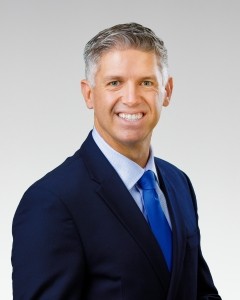5 Bare Essentials to Consider When Retiring from SCE
Retirement can seem like the most exciting thing in the world — and the most overwhelming. On one hand, you finally get to spend your time on your terms. Maybe that’s traveling the world. Maybe it’s spending more time with your grandkids. Or maybe it’s just spending quiet evenings at home.
Still, there’s that lingering question: “How does this all work?” So much goes into planning for retirement, as well as managing your money appropriately once you get to that point. It can be unnerving to consider how you’ll manage the nuances of your retirement plan, navigate Social Security benefits, and ensure you have the money you need to support your lifestyle in retirement.
At Warren Street Wealth Advisors, we hear these concerns from clients often. In response, we’ve developed a specialty focus on retirement planning for Southern California Edison employees. After helping hundreds of SCE retirees navigate this crucial time, we know your retirement packages and employee benefits programs inside and out. Below are the top five bare essentials you need to know to retire from SCE.
1. Take your final distribution when you want.
It’s a common misconception that you are forced to take your final distribution at retirement, but that’s not the case. You can wait until Jan. 1, request your final distribution, and then take a direct payment to avoid penalties using the “55 Rule” if you are 55 years or older. This will also allow you to defer the income tax due until the following year’s tax return.
2. Understand that it’s possible to retire penalty-free between age 55 and 59 ½.
Here’s a scenario we see all the time: you’re 57. You want to retire. You don’t want to wait until 59 ½ to do it. But you know that there’s a 10% federal tax penalty and a 2.5% California state tax penalty if you take the money out of your IRA before 59 ½. So are you stuck? Nope.
There are a lot of moving parts to this process, but we can take advantage of IRS rules like 72(t) distributions or the previously mentioned “55 Rule” to ensure our clients do everything possible to avoid paying penalties.
3. Take advantage of your medical subsidy.
Did you know that you are eligible for a retiree medical subsidy? The most common subsidies are 50% and 85%. When you retire, Edison will pay either 50% or 85% of your current medical insurance premium as a “continuation benefit” in retirement. Simply put, what you pay today is what you’ll pay in retirement. Of course, this is as long as you reach your required benefit milestone. (Unsure what your benefit is? Call EIX Benefits at 866-693-4947 to ask what benefit you have and at what age you’ll receive it.)
4. Weigh your Social Security options.
There is all kinds of information out there about what to do with your Social Security. Let us boil it all down: you don’t have to take it at 62! When we build a financial plan for a client, we calculate all options for optimizing Social Security. It’s ultimately your decision, but we suggest weighing your options before committing to collecting the 25-30% reduced benefit at age 62.
5. Use your 401(k) efficiently.
Your 401(k) can be an immensely powerful tool if you understand how to max it out and diversify your investments. In most cases, this is the point at which you’ll want to hire a professional team to help. One tool that can help you is the Charles Schwab Personal Choice Retirement Account (PCRA) option included in your 401(k) plan. The PCRA option lets you purchase investments on your own or hire a professional advisor to do it for you. This is made available through your Tier 3 option.
These are just a few of the tips and resources we offer SCE employees. For a deeper dive into strategies you can take to help you maximize your money in retirement, download our full SCE Retirement Handbook here.
Want to chat further? Feel free to reach out. We’ve worked with hundreds of employees with your exact plan and are glad to point you in the right direction.

Cary Facer
Partner Emeritus, Warren Street Wealth Advisors
Investment Advisor Representative, Warren Street Wealth Advisors, LLC., a Registered Investment Advisor
The information presented here represents opinions and is not meant as personal or actionable advice to any individual, corporation, or other entity. Any investments discussed carry unique risks and should be carefully considered and reviewed by you and your financial professional. Nothing in this document is a solicitation to buy or sell any securities, or an attempt to furnish personal investment advice. Warren Street Wealth Advisors may own securities referenced in this document. Due to the static nature of content, securities held may change over time and current trades may be contrary to outdated publications. Form ADV available upon request 714-876-6200.